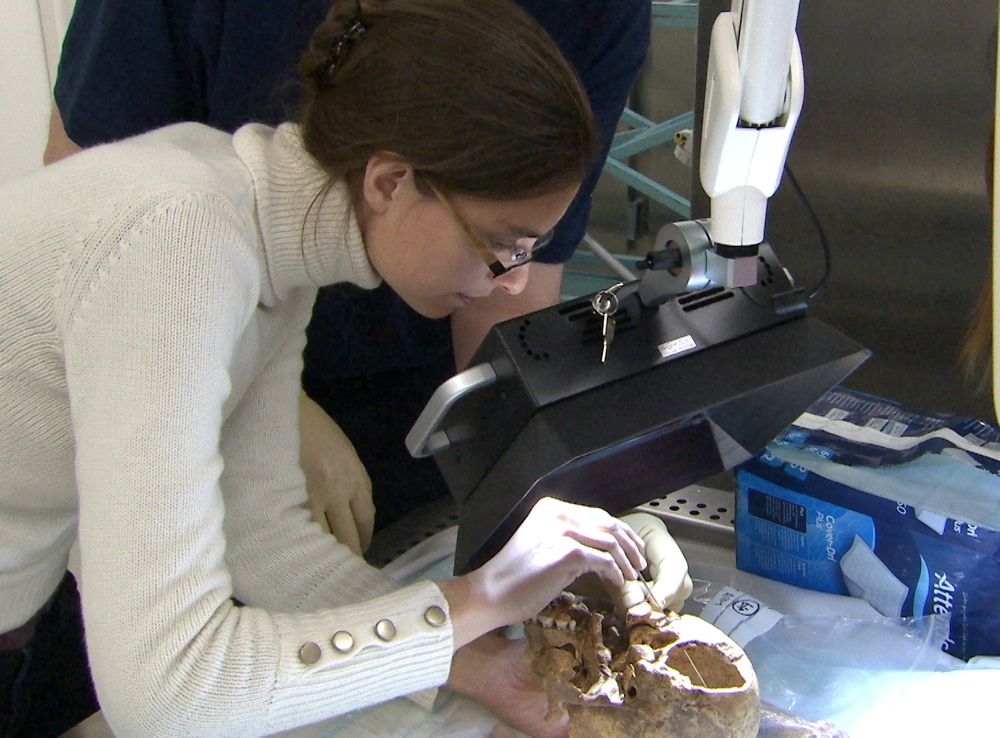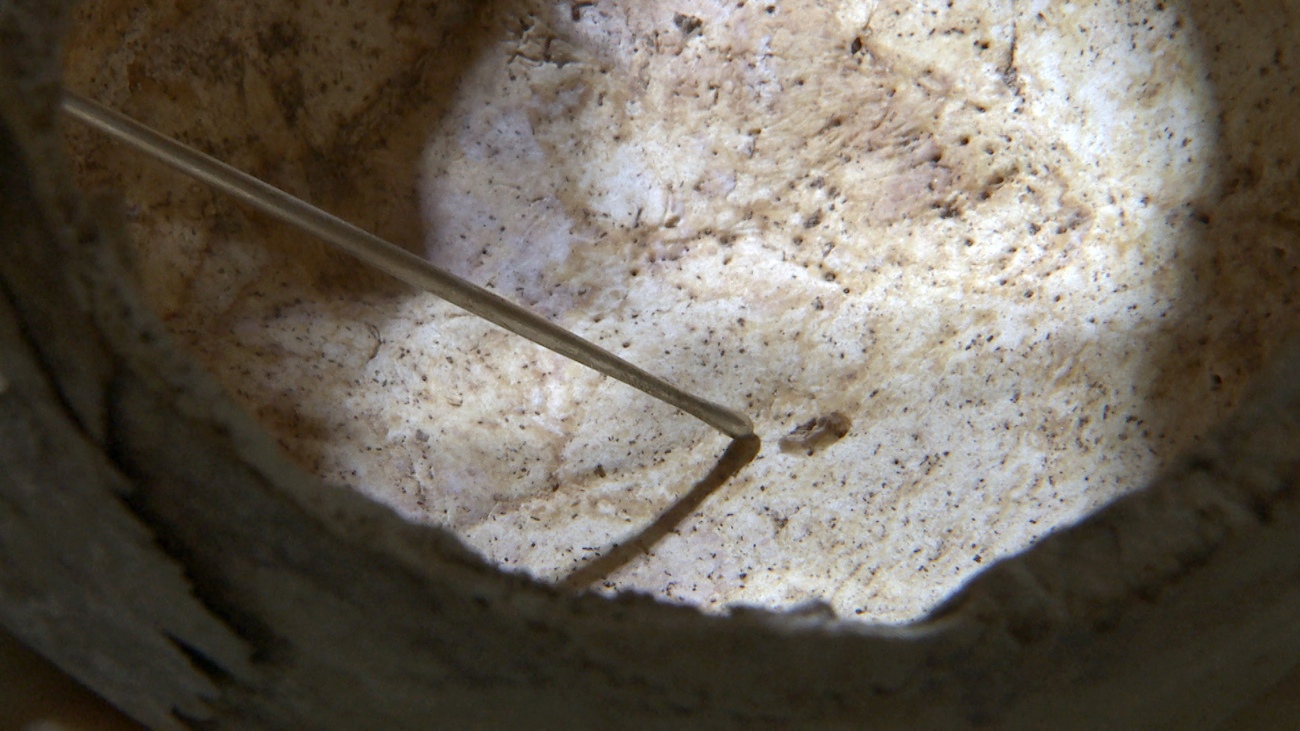New Footage Reveals Discovery of Richard III's Death Blow

Newly released footage depicts the moment scientists discovered the fatal wound that almost certainly took the life of King Richard III of England.
The film shows forensic pathologist Guy Rutty of the East Midlands Forensic Pathology Unit handling the skull of the last Plantagenet king, who died at the Battle of Bosworth Field in 1485. Richard III's long-lost grave was rediscovered in a parking lot in Leicester, England, in 2012.
The skeleton bore the marks of 11 different wounds, including two to the back of the skull that would have been fatal. [Infographic: See Details of Richard III's Final Wounds]
"It was one of those eureka moments," Rutty said in a statement, describing the discovery of the skull wounds that likely killed the king.
Skeletal stories
Richard III held the throne for only two years before his death, which occurred as part of the Wars of the Roses. He has long been a controversial figure, in particular because of a William Shakespeare play, "Richard III," which portrays him as an immoral, hunchbacked villain.
In fact, Richard III was no hunchback — though he did have scoliosis, a condition that twisted his spine and likely made one shoulder sit higher than the other. Richard's supposed villainy is a matter of interpretation, but supporters point out that Shakespeare worked under the Tudor dynasty, the family that defeated the Plantagenets for the throne. It's unlikely that fairness and balance was Shakespeare's aim.
Get the world’s most fascinating discoveries delivered straight to your inbox.
The discovery of Richard's skeleton revealed a brutal battlefield death. He sustained multiple scalp wounds, researchers reported in September 2014 in the journal The Lancet. These would have bled heavily. He was also stabbed in the lower jaw, in the cheek, and in the top of the head. There were two wounds on the back of the skull, one 2.4-by-2.2 inches (60-by-55 millimeters), and the other 1.21-by-0.67 inches (31-by-17 mm).
Deadly discovery
It is the second, smaller wound that Rutty is seen examining in the new video, which was taken by University of Leicester producer Carl Vivian. Using specialized lighting equipment to illuminate tiny marks on the bone, the pathologist sees a small divot inside the skull that lines up with the gaping hole, likely caused by a sword or halberd.
He realizes the two wounds were likely caused by the same blade, entering through the back of the head, slicing through the brain and nicking the far side of the skull.
"Careful examination showed that the two injuries lined up with one another, and also with an injury to Richard's first cervical vertebra," Jo Appleby, an osteologist at the University of Leicester and a leader on the Richard III project, said in a statement. "The combination of all three injuries provided evidence for the direction of the injury and also the depth to which the weapon had penetrated the skull."
Richard III's skeleton will be reburied in Leicester Cathedral on March 26.
Follow Stephanie Pappas on Twitter and Google+. Follow us @livescience, Facebook & Google+. Original article on Live Science.

Stephanie Pappas is a contributing writer for Live Science, covering topics ranging from geoscience to archaeology to the human brain and behavior. She was previously a senior writer for Live Science but is now a freelancer based in Denver, Colorado, and regularly contributes to Scientific American and The Monitor, the monthly magazine of the American Psychological Association. Stephanie received a bachelor's degree in psychology from the University of South Carolina and a graduate certificate in science communication from the University of California, Santa Cruz.



